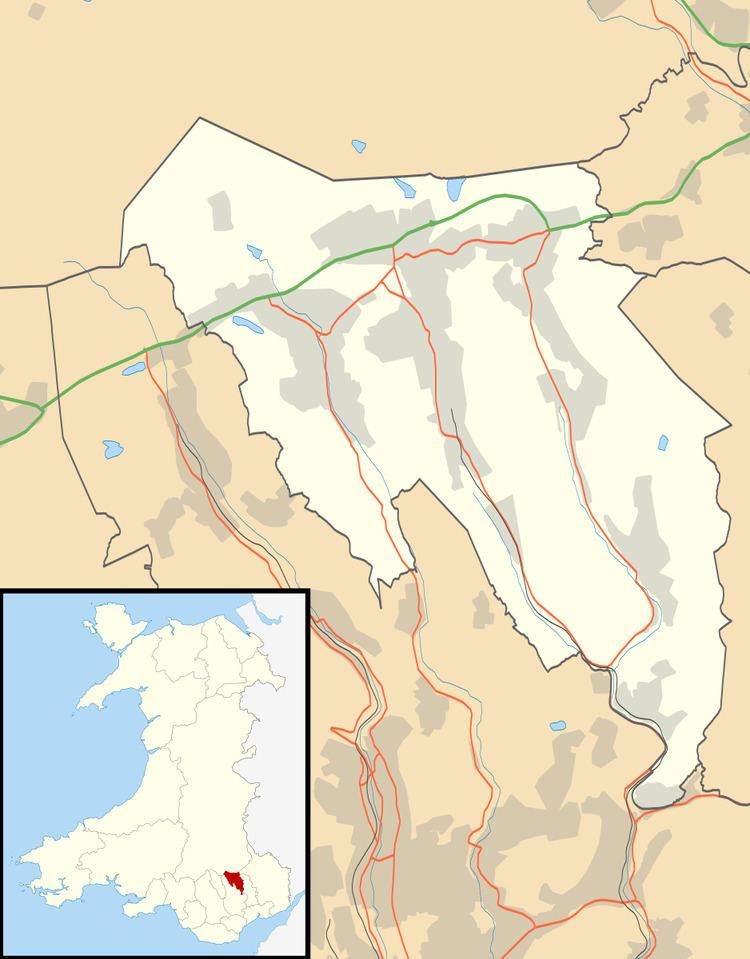Population 4,703 Local time Tuesday 1:29 AM | OS grid reference SO215055 Country Wales Postcode district NP13 Dialling code 01495 | |
 | ||
Weather 3°C, Wind NW at 19 km/h, 85% Humidity | ||
Cwmtillery (from Welsh Cwmtyleri, meaning 'valley of Tyleri') (population 2011. 4703) is a ward of Abertillery. Located within the historic boundaries of Monmouthshire, it is part of the administrative area of the county borough of Blaenau Gwent, Wales.
Contents
Map of Cwmtillery, Abertillery, UK
History
Located within a narrow valley formed by the River Tyleri, the area now known as Cwmtillery was once wholly a picturesque woodland area based beneath the heights of the local hill 'Gwastad' (551m) to the east and Mynydd James (550m)to the north. The area was mentioned by English historian William Coxe as "Well peopled, richly wooded and highly cultivated, almost rivalling the fertile counties of England".
During the 1840s, Thomas Brown acquired the rights to sink a mine shaft at the site of a farm known as Tir Nicholas, in the hope of reaching the 'Elled' coal seam. The shaft was sunk to a depth of 130 yards and the colliery set up was originally known as Tir Nicholas Colliery, and later the South Wales Colliery. The mine changed hands in 1852, with John Russell taking ownership. Russell increased the original shafts and deepened the mine to 240 yards. The mine had a long history, closing in 1982; but also suffered several disasters, with four underground explosions between the dates of 1857 and 1876. The two worst disasters were in 1857 which saw the deaths of 13 miners, and the 1876 explosion which killed 16 men and boys.
The Church of St Paul was constructed in the Early English style during 1890 and opened for worship in January 1891, initially as a daughter church of the parish of Abertillery. A distinct parish of Cwmtillery was set up in 1923, and has been served by the following incumbents.
The Rev Thomas Madog Williams (1923–30) - Priest-in-Charge 1920-23.
The Rev William Carey Morton (1930–40).
The Rev Benjamin Penry Evans (Priest in-charge, 1940 only).
The Reverend William Clifford Ponton (1940–46).
The Rev William Daniel Phillips (1946–53).
The Rev Arthur Walter Sneyd (1953–55).
The Rev Thomas Arthur Foster (1956–59).
The Rev William Rhys Lewis (1959–62).
The Rev Frederick Sidney Ralph Bowden (1962–71).
The Rev Christopher Gwilliam (1972–75).
The Rev Brian Jeffrey Favell (1976–86). Also incumbent of Six Bells.
The Rev Richard Pain (Priest in charge 1986-88, incumbent 1988-91). Also incumbent of Six Bells.
The Rev Richard Walter Hugh Allen (1991–94). Last resident incumbent - also served Six Bells.
The parish has been served from Abertillery since 1995.
Cwmtillery was the principal location for the cult experimental feature film The Other Side of the Underneath (1972) written and directed by Jane Arden.
Following the demise of the coal industry in the 1980s the natural beauty of the landscape is again highly regarded. There are many walking trails in the area ranging from gentle lakeside walks to more energetic hillside climbs to over 580m.
